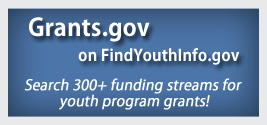Child Welfare System
Children who have experiences with the child welfare system are prone to running away and experiencing homelessness.1 This may result from high rates of homeless youth being placed in substitute care, such as foster care,2 and youth in the foster care system running away to avoid foster care, escape a specific foster care placement, or try to return home.3 In addition, youth who have aged out of the foster care system are at particularly high risk of becoming homeless.4
- Research suggests that 21 to 53 percent of homeless youth report being placed in foster care or an institutional setting.5
- Estimates vary, but as many as a third of youth in foster care may have run away from care at some point. Risk of youth running away from foster care increases with age and other risk factors.6
- A lack of “permanency” experienced by emancipated youth may result in a lack of independent living skills necessary to make the transition to self-sufficiency, and consequently to a lack of education and employment skills.7
- A study of youth in foster care found that 22 percent had been homeless at least one night within the first year after they left the foster care system, and five percent had been homeless for the first time within a week after leaving.8
Prevention efforts may include the following:
- State independent living programs that prepare youth to transition to adulthood
- Services to promote education, employment, life skills training, health education, case management, and mentoring
- Providing room/board funds to foster youth up to age 21 and follow-up services with youth aging out of foster care
- Partnering with Housing and Urban Development to help foster care alumni qualify for housing assistance9
Learn more about the federal programs that help youth transition from foster care without becoming homeless, and the partnerships between federal agencies.
Resources
Homelessness Resource Center: Homeless Populations
The Homelessness Resource Center, supported by the Substance Abuse and Mental Health Services Administration (SAMHSA), is an interactive community of providers, consumers, policymakers, researchers, and public agencies at federal, state, and local levels. The Center shares state-of-the-art knowledge and promising practices to prevent and end homelessness through the following:
- Training and technical assistance
- Publications and materials
- Online learning opportunities
- Networking and collaboration
The Center includes a section focused specifically on youth.
Administration for Children and Families
The Administration for Children and Families website provides information on a wide range of information on programs, services, and policies on topics that include both child welfare and runaway and homeless youth.
National Resource Center for Youth Development (NRCYD)
NRCYD is part of the Department of Health and Human Services’ Children’s Bureau’s Training and Technical Assistance Network. NRCYD helps build the capacity of states and Tribes to provide high quality services to their youth in out-of-home placements, former foster youth, and other youth in at-risk situations through a focus on youth development, cultural competence, collaboration, and permanent connections.
Fostering Connections to Success and Increasing Adoptions Act
The president signed the Fostering Connections to Success and Increasing Adoptions Act of 2008 (P. L. 110-351) into law on October 7, 2008. Generally, the law
- amends the Social Security Act to extend and expand adoption incentives through FY2013;
- creates an option to provide kinship guardianship assistance payments;
- creates an option to extend eligibility for title IV-E foster care, adoption assistance, and kinship guardianship payments to age 21;
- de-links adoption assistance from Aid to Families with Dependent Children (AFDC) eligibility over time; and
- provides federally-recognized Indian Tribes, Tribal organizations, or Tribal consortia (Tribes) with the option to operate a title IV-E program, among many other provisions.
The law extends services for youth in foster care up to age 21 helping to ensure more successful transitions to adulthood. This includes transition planning and case review requirements and education and employment supports and supervised housing options for children over 18. The Departments of Education and Health and Human Services have been working together to support the implementation of this law.
1 Toro, Dworsky, & Fowler, 2007; U.S. Department of Health and Human Services, 2008
2 Toro, Dworsky, & Fowler, 2007
3 U.S. Department of Health and Human Services, 2008
4 U.S. Department of Health and Human Services, 2008
5 Toro, Dworsky, & Fowler, 2007
6 Courtney, Skyles, Miranda, Zinn, Howard, & George, 2005
7 U.S. Department of Health and Human Services, 2008
8 Pecora et al., 2003
9 Toro, Dworsky, & Fowler, 2007
Youth Topics
Collaboration Profiles
Feature Articles
Tools & Guides
Programs
Technical Assistance
Websites
Publications
Videos & Podcasts
Departments


Announcements
Youth Topics

Map My Community is a tool designed specifically to assist you in locating resources in your community to help you build and strengthen your youth program. Get ideas for new partnerships, identify gaps in your community, and learn about resources to avoid duplication of effort.


















